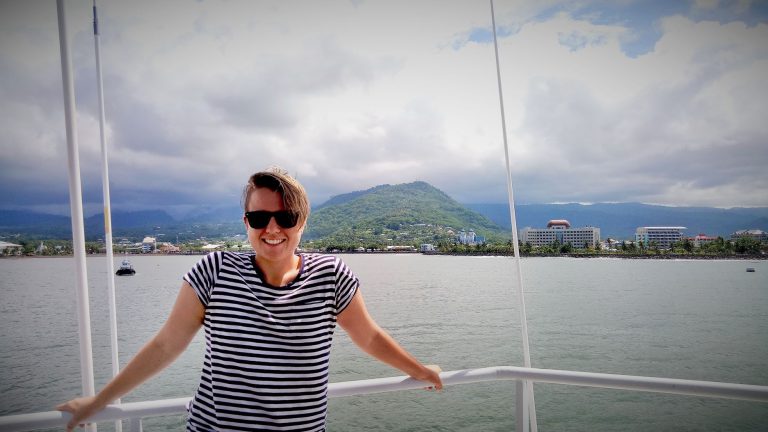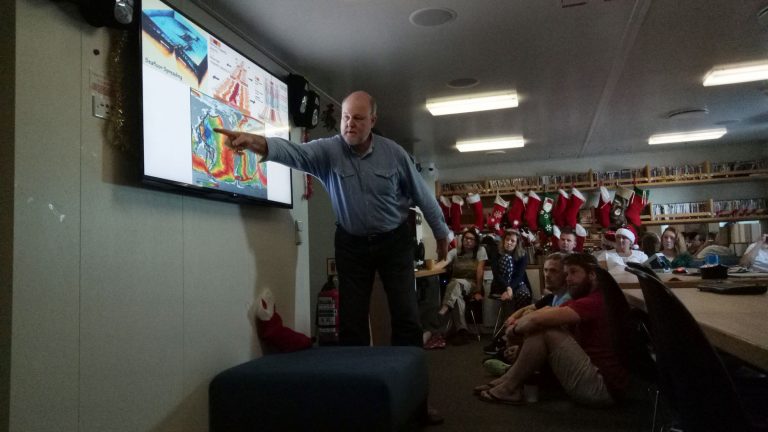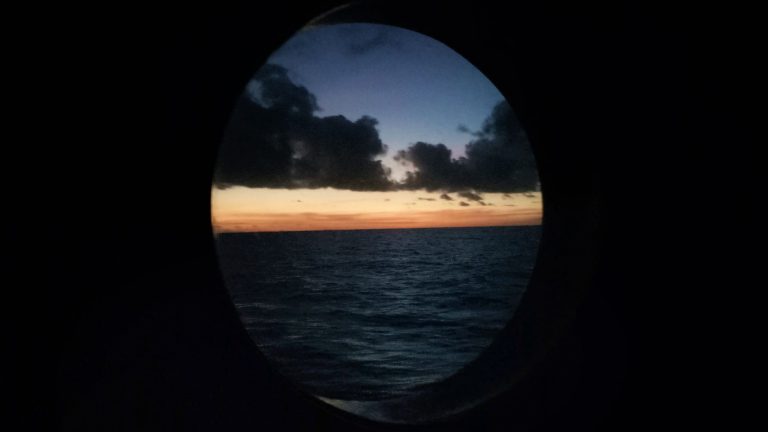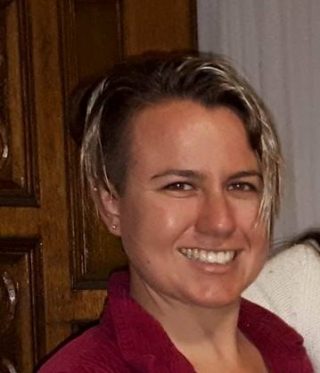I am drawn to the ocean: by its beauty, its merciless nature, its capacity to provide food and habitat and to sustain economies, its role in our climate, and the special place it holds in cultures across the globe. The oceans connects life.
Hello from R/V Falkor! My name is Cherie Colyer-Morris and I am a Student Opportunities Participant aboard the “Filling the Gaps: Mapping Ellice Basin” transit cruise between Apia, Samoa and Honolulu, USA. I am a recent honours graduate in Marine Science from the University of Newcastle, Australia, and I am thoroughly fascinated about learning everything there is to know about our Oceans.

Science and Society
A defining experience for me has been a marine sustainability internship I completed with Mars Symbioscience Indonesia, where I delved beyond coral reef ecology and into the realm of social science research. Ever since, I am constantly questioning how marine research can be translated into useful and accessible information for society, in such a way that can benefit people. Schmidt Ocean Institute shares this vision, and delivers education and science communication to society through their outreach program. If people are equipped with knowledge, only then can they be able to effectively care for the oceans.
Building Perspective
As I am at the start of my career with plans for a PhD in the future, my current ambition is to broaden my perspective on environmental issues. Perspective is what allows one to view an issue from different angles and think critically. I aim to build my perspective by pushing myself outside of my comfort zone and dipping my toes in as many environmental research fields as possible. Thus far, my experiences have been based in aquaculture and marine ecology, with a focus on coral reef ecology and estuarine food web ecology. I have also dabbled my toes in rock oyster ecotoxicology and herpetology. I simply crave learning new things, and for as long as I can remember I have dreamed of traversing oceans in the name of scientific research. I basically fell off my chair when I discovered the SOI Student Opportunities program!

Let Us Learn Together!
I have never experienced anything close to this before, and as such sea floor mapping and marine geology is a totally new field to me. Perhaps it is new to you too? I hope to take you on a journey with my blogs as we learn together about this fascinating science and life aboard the state-of-the-art Research Vessel Falkor.
As part of the science team, I will be sharing the 24hr watch schedule in R/V Falkor’s control room, ensuring the mapping equipment (a multi-beam sonar) is acquiring data properly, I will be deploying an Expendable Bathythermograph (XBT) to collect sound velocity profiles that are required by the computer to calculate seafloor surface data, and I will also be using the computer program QPS Qimera to edit seafloor surface data.
While on board, I will be taking every opportunity to ask questions to learn as much as possible about the science, about research at sea, and about the ins-and-outs of the different crew roles that make the R/V Falkor tick.
Stay tuned for my next blog as I find my sea legs and we search to uncover the ancient secrets of the seafloor!

Schmidt Ocean Institute acknowledges and thanks the Republic of Kiribati and the Phoenix Islands Protected Area for their assistance and support of this research.

